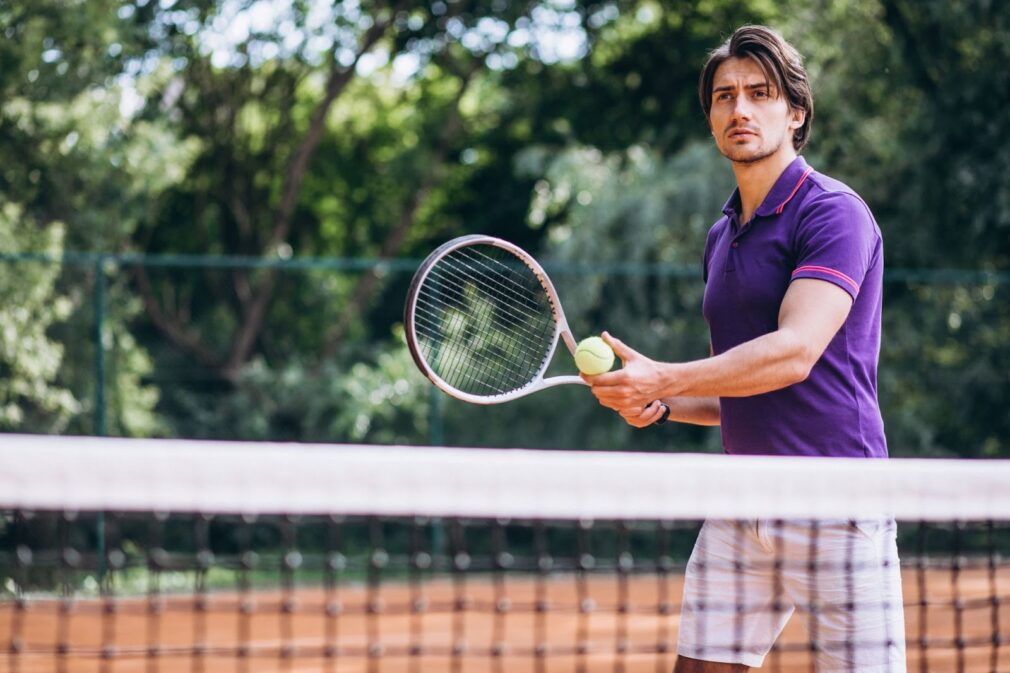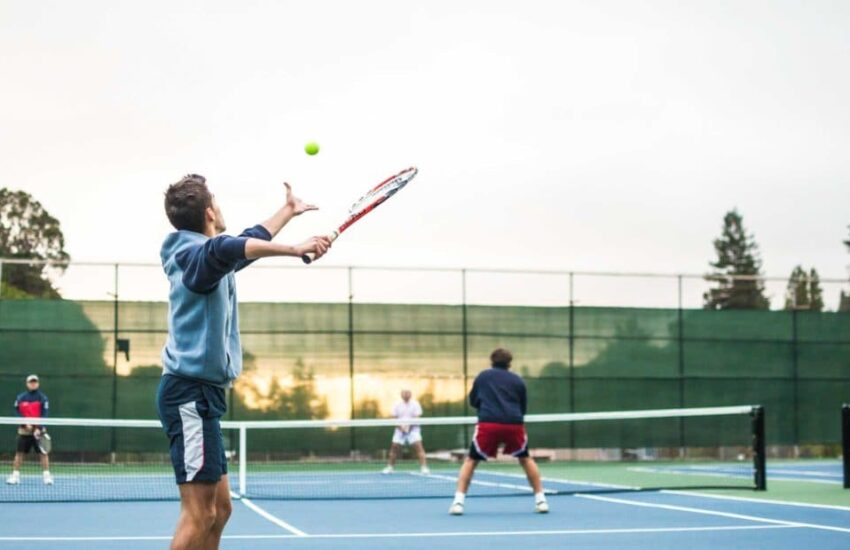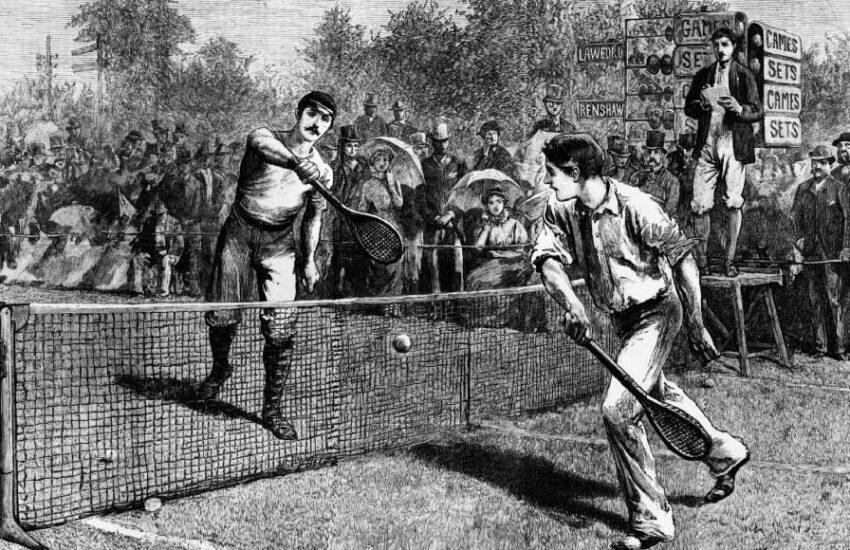Unlocking the Art of Tennis Slicing
In the realm of tennis, the slice shot emerges as a distinctive form of groundstroke, characterized by the player’s ability to instill backspin upon the ball. This remarkable feat is accomplished through a carefully orchestrated sequence of actions, involving a swing that travels from a high point to a low point and the utilization of an open racket face. The profound consequence of executing the slice shot is the ball’s tendency to maintain a low trajectory post-bounce, meandering through the air at a leisurely pace, and ultimately skimming the surface upon landing. This tactical maneuver confounds opponents, rendering their attempts at effective returns a formidable challenge.
Within the realm of slice shots, two prominent variants take center stage: the forehand slice and the backhand slice. While both hold their own significance, the backhand slice enjoys greater prevalence and is generally deemed more accessible to execute. This is primarily attributed to the inherent swing path of a one-handed backhand, which seamlessly lends itself to the creation of backspin. A slice backhand, when deployed, can serve a dual purpose, transforming into either a defensive measure or an offensive weapon, depending on the player’s strategic intent.
Mastering the Art of Slice Shots in Tennis
In the world of tennis, the slice shot is a versatile weapon that can be employed in a variety of strategic ways. This underappreciated stroke can be a game-changer, and understanding its nuances can significantly elevate your performance on the court. Let’s delve into the world of slice shots and explore how to use them effectively:
Changing the Pace:
One of the most compelling aspects of the slice shot is its ability to alter the tempo of a rally. Unlike the blazing topspin groundstrokes that dominate modern tennis, the slice shot travels at a more sedate pace. This change of pace can be a tactical masterpiece, disrupting the rhythm of an opponent who thrives on the adrenaline of faster exchanges.
Recommendation: To maximize this disruption, vary the pace of your slice shots. Mix in a few faster slices and follow them up with slower ones to keep your opponent guessing.
Keeping the Ball Low:
When the ball lands after a slice shot, it tends to hug the ground, making it a potent weapon on certain surfaces like grass and fast hard courts. The low bounce can be particularly challenging for opponents who are used to balls bouncing higher off topspin shots.
Tip: Experiment with different angles and spins on your slice to control the bounce and make it even more unpredictable. Read about the dimensions of a tennis ball – the unsung hero of the court! Learn all about ‘What is the size of a tennis ball’ in this informative article.
Approach Shots:
The slice shot is often the preferred choice for players looking to make a strategic move to the net. Its tendency to stay low after bouncing forces the opponent to hit the ball upwards, creating a high volley opportunity for the net player. This can be a game-changer in aggressive, net-oriented play.
Insight: Timing and positioning are crucial when using the slice as an approach shot. Make sure to be well inside the baseline to capitalize on the high volley.
Defensive Shots:
In moments of desperation, when you find yourself stretched wide or on the run, the slice can be your best friend. It buys you time to regain your court position and recover from defensive situations.
Strategy: Practice your slice under pressure. Develop the ability to hit accurate slices even when you’re on the move, and you’ll have a reliable escape plan in tight situations.
Mastery through Control:
Hitting the perfect slice shot requires an exquisite balance of control and finesse. Too much backspin without enough forward momentum can cause the ball to float invitingly for your opponent. Therefore, mastering the art of slice shots demands precision and practice.
Key Point: Work on your footwork and body positioning to ensure you have the right foundation for a controlled slice shot. This will help you strike the right balance between backspin and forward momentum.
Unlocking the Strategic Power of the Tennis Slice Shot: A Comprehensive Guide
In the dynamic world of tennis, the slice shot stands as a versatile gem in a player’s arsenal, capable of transforming the course of a match with its finesse and precision. As a player, understanding when and how to use the slice shot strategically can elevate your game to new heights. Let’s delve into the multifaceted applications of this stroke and explore when it should be deployed on the court.
1. Defensive Excellence: A Slice as Your Lifesaver
Situation: You find yourself pulled wide, struggling to regain control of the rally.
The Slice Solution: When under defensive pressure, employ the slice shot. Its slower speed and lower bounce provide you with the time needed to recover your court position, ensuring you stay in the point.
Pro Tip: Angle your slice crosscourt to further distance your opponent and buy additional time for recovery.
2. Variety and Disruption: Unleash the Unexpected
Situation: Your opponent has grown accustomed to your topspin shots, maintaining a rhythm in their returns.
The Slice Solution: Inject variety into your game by strategically incorporating the slice. Its change in pace and spin can disrupt your opponent’s rhythm, inducing errors or weaker returns.
Pro Tip: Employ the slice unpredictably to keep your opponent guessing and off balance.
3. Approach Shots: The Slicing Shortcut to Net Success
Situation: You’re planning a tactical approach to the net.
The Slice Solution: A slice approach shot is a formidable choice. Its low trajectory forces your opponent to hit their passing shot upwards, making it less accurate and effective.
Pro Tip: Follow your slice approach to the net aggressively, ready to capitalize on any weak responses.
4. Against Power Players: Slicing Through the Storm
Situation: Facing a formidable power player on the opposite end.
The Slice Solution: Employ the slice as a strategic tactic against power players. Its low trajectory can be challenging for them to attack, especially if their sweet spot is waist to chest high.
Pro Tip: Keep your slice shots deep and controlled to minimize your opponent’s opportunities for aggressive returns.
5. Playing the Drop Shot Game: Slice, Slow, Succeed
Situation: Looking to execute a drop shot that’s tough to reach.
The Slice Solution: The slice is your go-to for drop shots. Its backspin slows the ball down and reduces its bounce, making it a daunting task for your opponent to reach in time.
Pro Tip: Mix up your drop shots by occasionally disguising them as regular slices, catching your opponent off guard.
6. Keeping the Ball in Play: The Safe Slice Haven
Situation: You’ve found yourself out of position or need extra time to recover.
The Slice Solution: In such scenarios, the slice is your safest bet. It keeps the ball in play, preventing unforced errors and allowing you to regain your footing.
Pro Tip: Focus on consistency and placement when relying on the slice as a recovery tool.
7. Return of Serve: The Slice’s Control Over Pace
Situation: Confronted with powerful serves, particularly on the backhand side.
The Slice Solution: Incorporate the slice into your return arsenal, especially on your backhand. This shot can neutralize the pace of incoming serves and grant you a more controlled response.
Pro Tip: Experiment with varying degrees of slice to adapt to different serve speeds and placements.
A Word of Caution: While the slice shot is undoubtedly a valuable weapon in your tennis repertoire, mastering it requires dedicated practice. Begin by honing the basic mechanics and gradually incorporate it into your match play. Like any craft, patience and persistence will yield rewarding results on the court.
Mastering the Slice Shot: Essential Techniques and Tips for Novice Tennis Players
The slice shot is a secret weapon in a tennis player’s arsenal, and learning to execute it effectively can elevate your game to new heights. This comprehensive guide will equip novice tennis players with the knowledge and techniques they need to become proficient in hitting slice shots.

1. Understand the Mechanics: Unlocking the Backspin Magic
- Slice shots are characterized by backspin, which imparts a unique and unpredictable bounce to the ball. To achieve this, you must brush the racket from high to low on the back of the ball at contact;
- Keep the racket face slightly open during this action to optimize the spin.
2. Choose the Right Grip: The Continental Connection
- Opt for the continental grip when hitting slice shots. While it may feel unfamiliar at first, it’s the ideal grip for this specific technique;
- The continental grip positions your hand in a way that enables you to execute the necessary high-to-low swing path effectively.
3. Perfect Your Swing Path: Balancing Act for Precision
- The swing path for a slice shot is paramount. It should be high to low, but the degree of downward motion will determine the amount of slice and trajectory of the ball;
- Finding the right balance between downward and forward movement in your swing is crucial for achieving the desired outcome.
4. Master Your Body Position: The Art of Stepping In
- To generate more controlled power and accuracy, step into the shot with your non-dominant foot (left foot for right-handers, right foot for left-handers);
- This forward movement allows you to lean into the shot and create a strong foundation.
5. Focus on Follow-Through: Wrap It Up Sideways
- Despite the focus on slicing, remember to follow through with your stroke. The follow-through for a slice shot is typically more lateral, finishing across the body;
- A proper follow-through ensures a smooth and controlled execution of the shot.
6. Start Slowly: Building Blocks of Success
- Don’t rush the learning process. Begin at a slow pace, concentrating on getting the technique right;
- Gradually increase the speed of your swing as you become more comfortable and confident in your slice shot abilities.
7. Watch and Learn: Gaining Wisdom from the Pros
- Observe professional or advanced players as they execute slice shots. Pay close attention to their technique and how they strategically employ the slice in various match situations;
- Analyzing the pros can provide valuable insights and inspiration for your own game.
8. Practice Regularly: The Path to Mastery
- Consistency is key. Dedicate time to practicing slice shots regularly to develop a keen feel for the shot;
- As you accumulate hours of practice, your confidence and precision will steadily improve.
9. Consider Getting a Coach: Personalized Guidance for Progress
- A knowledgeable coach can be a game-changer. They can provide personalized feedback, identify and correct any errors, and offer specific exercises to help you advance quickly;
- Investing in a coach can accelerate your development and refine your slice shot technique.
In conclusion, while mastering the slice shot may initially seem daunting, remember that it’s a valuable skill that can add depth and versatility to your tennis game. With dedication, practice, and these essential tips, you’ll be slicing your way to success on the court in no time.
Conclusion
In conclusion, the slice shot in tennis represents a nuanced and skillful technique that adds depth to a player’s repertoire. It involves the artful application of backspin through a carefully orchestrated swing and racket positioning, resulting in a ball that stays low, moves deliberately through the air, and skids upon landing, confounding opponents. The distinction between the forehand and backhand slice highlights the versatility of this shot, with the latter being a more common and accessible choice. Whether deployed defensively or offensively, the slice shot stands as a testament to the strategic intricacies of the sport, offering players a valuable tool to gain the upper hand on the court.



